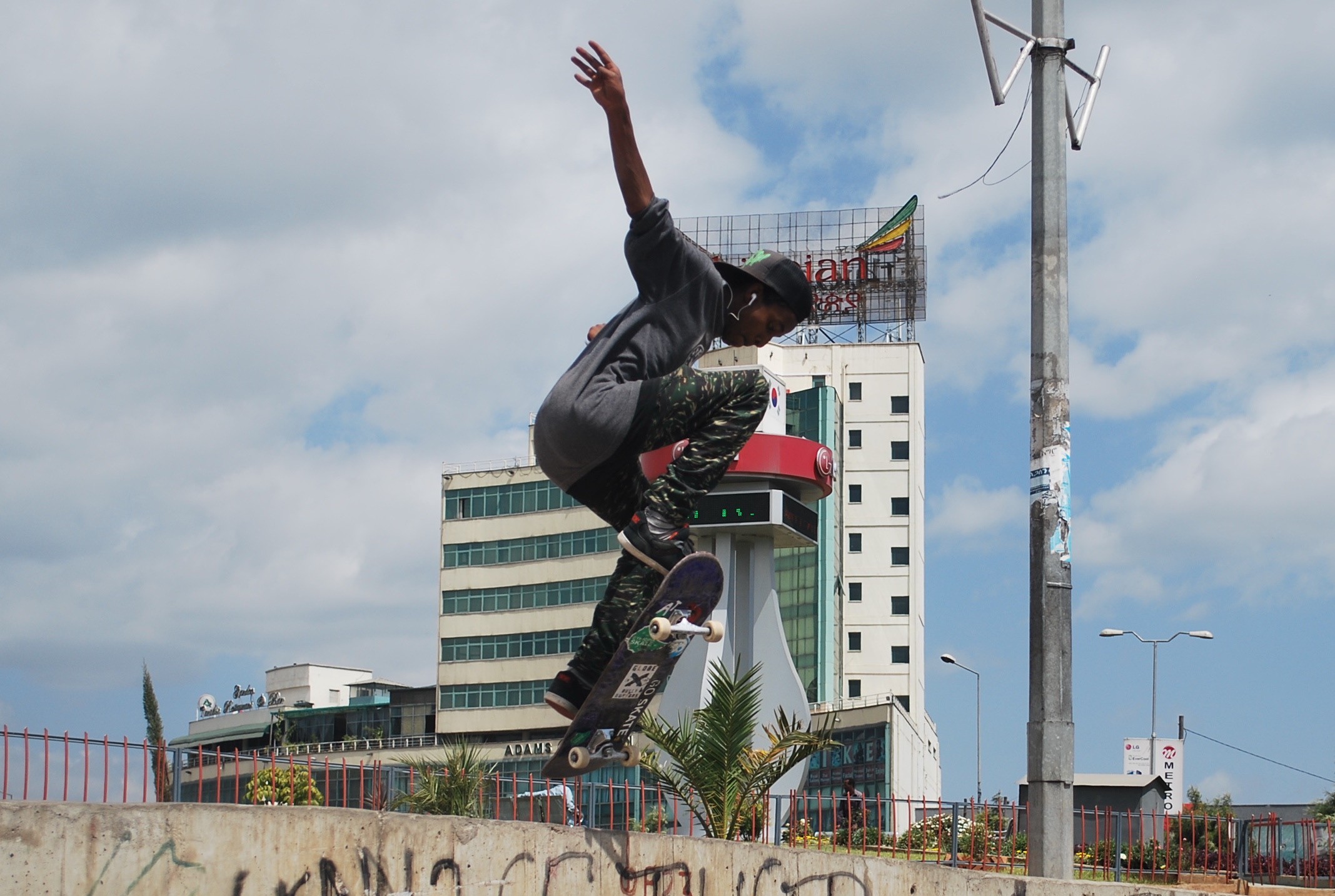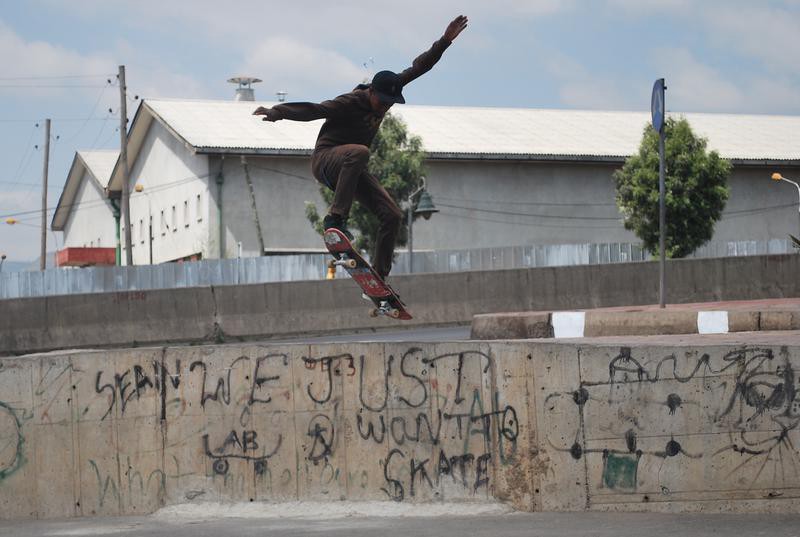
Skateboarders in Ethiopia’s capital have a tough time getting ahold of decent skateboards, but a German design student’s degree thesis–and a load of local enthusiasm–could change that.
The skateboarding scene isn’t big in Addis Ababa. In fact, it appears to be confined to a small but dedicated group of young Ethiopians hanging out in a car park close to the headquarters of the African Union.

Part of the problem with the sport’s expansion is that no one manufactures skateboards in Ethiopia and the boards are expensive to import. The kids near the African Union rely on friends and other enthusiasts to send boards over from abroad.
“People share their skateboards. We take care of our boards and give the old boards to other people,” said Eyoel Getachew, a graduate from Mekelle University, who prefers to skate with a longboard–essentially a larger skateboard with bigger wheels–and even travels to work on it. “There were two kids here who tried to make [their own] skateboard–just the board–but it wasn’t strong enough and it broke,” he added.
The problem intrigued Daniel Scheidler, a German design student at Bauhaus University in Weimar, who met Getachew when he spent several months skating in Ethiopia earlier this year. For his degree thesis, Scheidler came up with a product design for a skateboard that could be cheaply produced by local manufacturers. He called the project SK8OPIA.
The board is made from a composite of plywood and fiberglass, which is cheap, lightweight, and, importantly, not as brittle as other materials. Scheidler might also claim to have reinvented the wheel, or at least developed it further. His version is cast out of spray-foam insulation, covered in fiberglass and intended to be finished with leather or rubber taken from used tires.
Scheidler’s skateboard is hardy and apparently rides well off-road, an advantage given Ethiopia’s often pot-marked streets. There’s even a modified design with only three wheels, intended to further cut down on costs, an important consideration given that Ethiopia is still one of the world’s poorest countries. World Bank data puts per capita income here at just $470.
The skateboarders in Addis Ababa were impressed. “It was awesome,” said Nathan, a 16-year-old who has been skating for nearly two years. “It goes on rough surfaces, it goes anywhere.”
Two of Nathan’s friends joined him. “So, should we show you some tricks?” he asked.

Despite the efforts of Scheidler’s SK8OPIA–and another local skating project Ethiopia Skate, which aims to build the capital’s first skate park and managed a short spot on CNN earlier in the year–skateboarding has yet to get real traction in Addis Ababa. Nathan and his friends skate most Sundays, but the scene is still pretty nascent and the prototype board went back to Germany with Scheidler for his graduation show.
But Getachew still has the wheel moulds and he and Scheidler have plans for the Ethiopian skating scene in 2015. There may even be a range of protective clothing in the (half) pipeline. “Most of the skaters here don’t use protection–for them the boards come first,” said Getachew. “But I’m thinking we could make local protection.”
He explained how to make hand and wrist protection using a heavy-duty construction glove with material cut from a plastic chopping board glued to the palm. “Those materials are available here,” he said enthusiastically. “And there’s an online video that shows you [how to make it].”


How We Get To Next was a magazine that explored the future of science, technology, and culture from 2014 to 2019. This article is part of our Playing the Field section, which examines how innovations in sports affect the wider world. Click the logo to read more.
